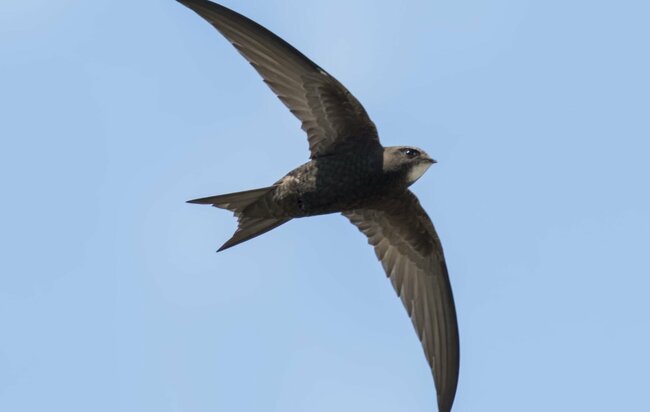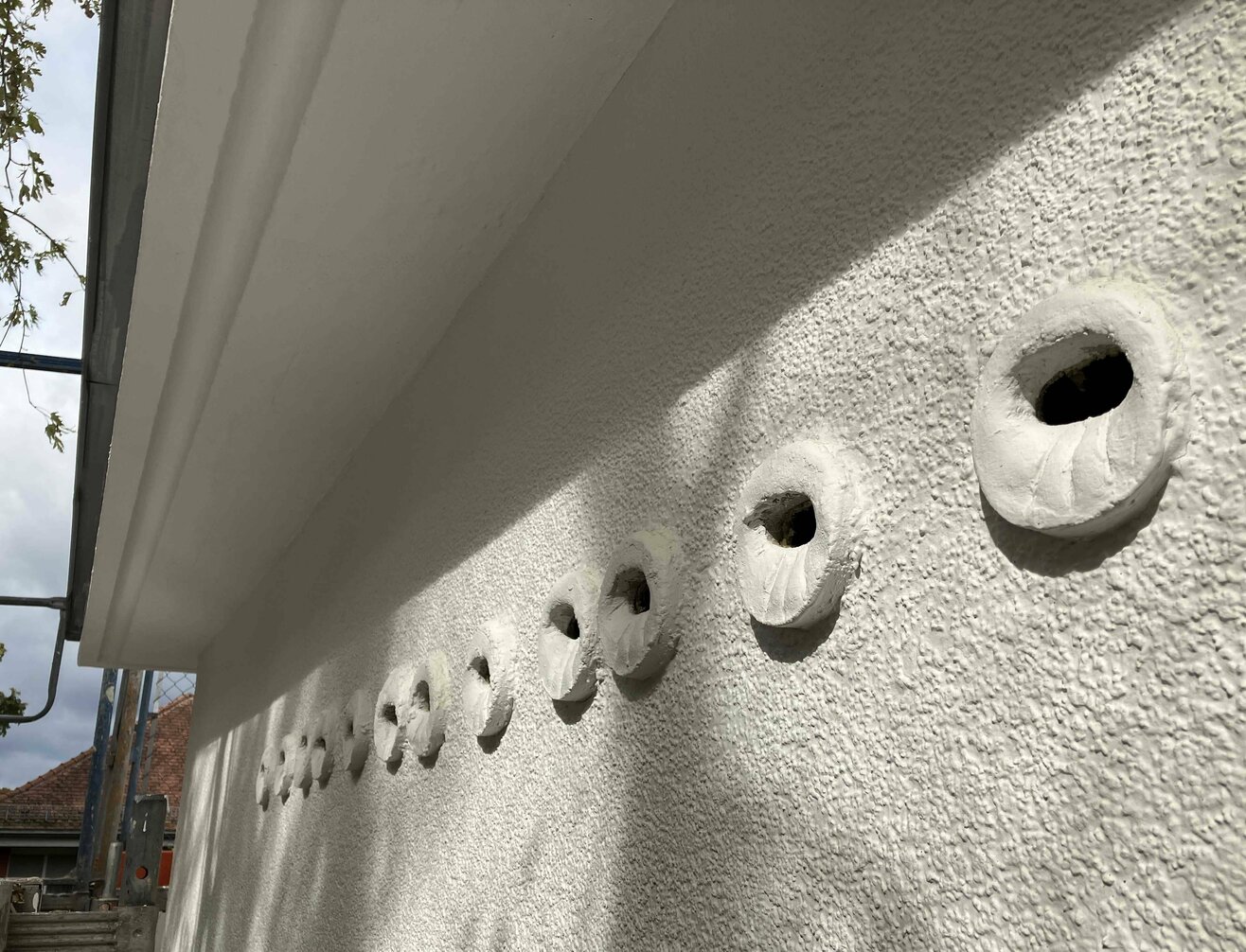Fact sheet
- Apus apus
- Body length: 16–17 cm
- Wingspan: 42–48 cm
- Food: swarming insects (including mosquitoes)
- Predators: falcon, owl, weasel, marten
- Spends day and night in the air
- Wintering grounds in South Africa

Facades
Here live common swifts
Numerous animal species, such as the swift, use cavities and crevices in façades and roofs as breeding or roosting sites. With targeted measures, building surfaces such as façades can be transformed into valuable habitats for these building-dwelling species.
Modern construction methods and the renovation of old buildings offer fewer and fewer nesting sites for façade breeders such as tree sparrows, swifts and bats. Additional nesting boxes offer a valuable alternative here. These can be easily attached to buildings and provide birds with safe nesting sites that are protected from the weather and predators. For swifts, special cavity boxes are installed in the façade as bricks. Swift nesting aids are suitable for a wide variety of bird species, including the tree sparrow. However, due to the different mounting heights on the building, tree sparrows are likely to settle in the nesting boxes on the lower floors, while swifts are more likely to seek out the higher nesting aids.
An additional advantage of artificial nesting aids is that nest boxes can be installed in places with sufficient food supply, such as parks or gardens. As swifts are colony breeders, a whole breeding community can be encouraged by installing several boxes. These boxes are low-maintenance and long-lasting, making them a sustainable solution.


